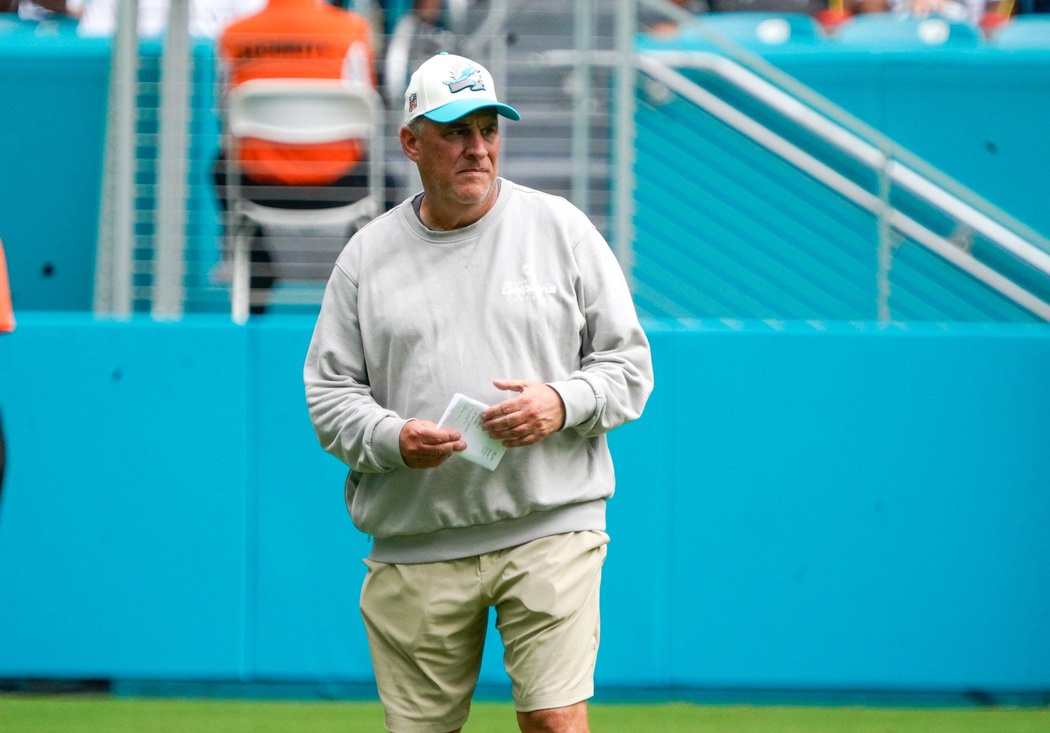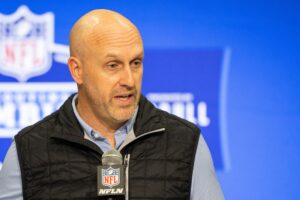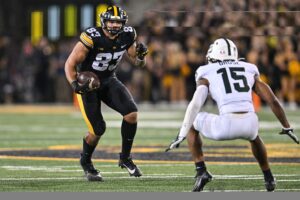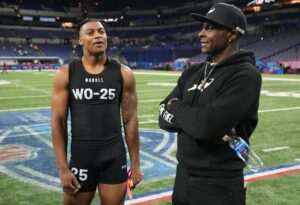How Vic Fangio Has Affected the Current NFL Landscape
To most football fans, Vic Fangio is known as one of the true elder statesmen in the NFL. A longtime defensive coordinator and former head coach of the Denver Broncos, Fangio has been all around the league. He is currently the defensive coordinator of the Miami Dolphins, which has been fine, if inconsistent, through the first five weeks of the season. But Fangio’s influence goes beyond simply coaching for many teams over recent decades. His defensive schemes have nearly single-handedly altered the course of the NFL, for better or worse. But how did this happen? Who is Vic Fangio, and what are Fangio’s core defensive philosophies that are now ingrained within the NFL? Well, let’s start with learning about Fangio himself.
Who is Vic Fangio?
Victor John Fangio was born in 1958 in Pennsylvania where he played and coached high school football at Dunmore High School. From there, Fangio slowly rose through the ranks of decorated high school coach at Yale Preparatory School to USFL defensive assistant coach. He got his NFL break in 1986 as the linebackers coach of the New Orleans Saints, a team firmly defined by their four linebackers nicknamed the “Dome Patrol.” For nine years, the Saints suffered only 2 losing seasons and had their first 4 playoff appearances in team history. Due in large part to Fangio and the linebackers, the Saints enjoyed 3 top 5 and only one below-average defensive season during the 9 seasons. Fangio quickly became a new defensive mind making waves. At just 36 years old, he accepted his first defensive coordinator position with the expansion Carolina Panthers.
Fangio’s Coordinator and Head Coaching Resume
With Vic Fangio at the helm, the Panthers had three straight seasons of production with them posting the 10th best defense in their inaugural season. In 1996, Fangio’s second-ranked defense led the Panthers to an NFC Championship birth in just their second season. The bottom fell out in 1998, causing Fangio to leave for the Indianapolis Colts and later the expansion Houston Texans, both to poor results. After a great stint as the Baltimore Ravens’ linebackers coach, coaching an absolutely loaded linebacking room with Ray Lewis, Terrel Suggs, Adalius Thomas, and Bart Scott, San Fransisco came knocking. This began Fangio’s true ascent into popularity. For the four seasons, San Fran was one of the best teams in football, with 4 straight seasons of top 5 defenses. Fangio further cemented himself with a great tenure with the Chicago Bears before finally getting a head coaching job with the Denver Broncos.
Despite a disappointing first tenure as head coach, Fangio’s defense was still excellent. The Broncos eventually fired Fangio, who took a consulting position for the 2022-2023 Super Bowl runner-up Eagles, who just so happened to have a top-10 defense. Now he’s with the Dolphins in need of a steady defense to complement the most dynamic offense in the league.
Fangio’s Scheme and Influence
So how does Vic Fangio’s defense work? Well, when looking at his background and the best players he’s helped coach, it’s clear where the defense starts: the middle. Well, it’s not the linebackers that make this defense tick, though they are critical. Fangio’s scheme is known by many as a two-safety high scheme, meaning that the standard defense can roll and disguise a multitude of packages. As he puts it, “I [try] to make it harder for them to figure out what [coverage] we’re in, both before the snap and after the snap.” The point of the defense is to keep the offense guessing and rely on the playmakers on defense to make plays, primarily the two hybrid safeties. Both need to not only help cover the pass but also support the run due to a lighter box and less blitzing. As such, they almost become akin to smaller linebackers.
Due to the thin stretching of these safeties, the defense must be totally in sync and ready to pick up the slack when needed. This may sound like a gamble, but the scheme’s flexibility shifts into other looks and formations to lessen the odds of a big play. If this sort of defense sounds familiar, it’s because it is fairly cemented in the NFL right now. The main teams using it now are the Miami Dolphins, Green Bay Packers with Joe Barry, and Los Angeles Chargers with Brandon Staley, with other coaches like Jonathan Gannon of the Philadelphia Eagles and now Arizona Cardinals using a scheme similar in principle.
A Defensive Dilemma
So, what’s the problem here? Fangio’s defensive resume speaks for itself, so how could this possibly negatively impact the NFL? Well, it all comes down to opportunity cost and talent. Opportunity cost means the lesser of two evils, and for defenses, that means playing deep and giving up shorter plays to the offense. “Dinking and dunking” is something almost every offense can do, and while it may take time, shorter plays can eventually lead to points. Plus, with cornerbacks playing off and allowing free releases to the wide receivers, big plays can still happen.
However, the more pressing problem is that of talent level. This defense often must just be flat-out better than the offense they’re facing. The front four defensive linemen must be putting pressure on the quarterback, the defensive backs must be locking down their zones, and the middle of the defense must be flying around making plays all day. This works wonders for a team like the mid-2010s San Fransisco 49ers led by All-Pro linebackers Patrick Willis and Navarro Bowman as well as safeties Dashon Goldson and Donte Whitner. However, when teams like last year’s Detroit Lions and Chicago Bears, a team that traded their best linebacker Roquan Smith during the year, have little to no linebacker talent, the result is dreadful defensive seasons.
The defense also relies more on the aggressiveness of the opposing offense. Quarterbacks like Patrick Mahomes and Josh Allen struggled with this defense early in their careers due to their aggressive playstyle. The defense is meant to punish that. But not only do most quarterbacks simply not play like those two, with plenty of Matt Moore-esque quarterbacks throughout the league, quarterbacks that do are adapting and now picking apart defenses more than ever, with Allen torching Fangio’s Miami Dolphins for 48 points.
Looking Forward and Fangio’s Legacy
While Vic Fangio’s defensive scheme seems to be heading out the door, teams like the contending Miami Dolphins and surging Chargers hope that there’s still some magic in this defense before its time runs out. However, obscured the future of Fangio’s defense is, its legacy is not. Vic Fangio single-handedly affected the NFL as we know it, and he isn’t ready to give it up. “I’m 65 years young. [I can] still outwork these younger coaches.”
Main Photo: [Jeff Romance/The Palm Beach Post] – USA Today Sports






